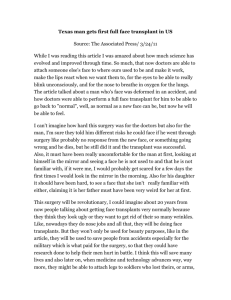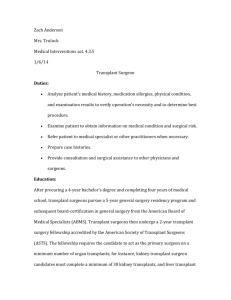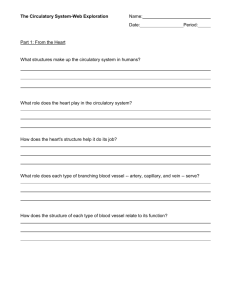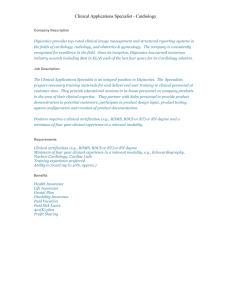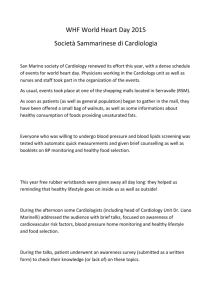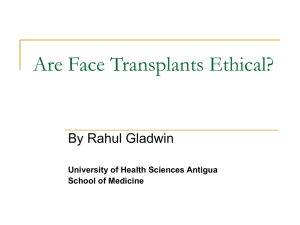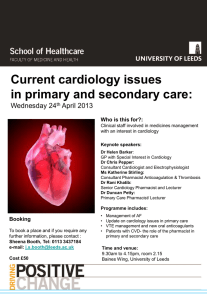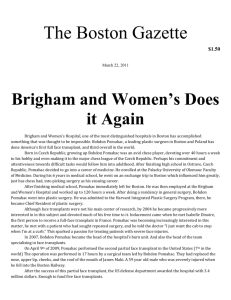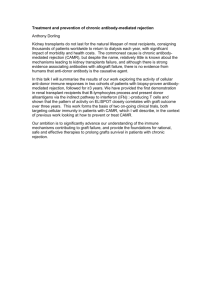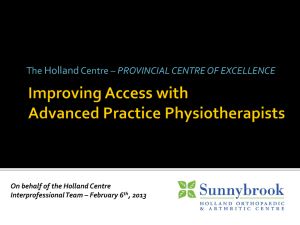Introduction to Cardiology
advertisement
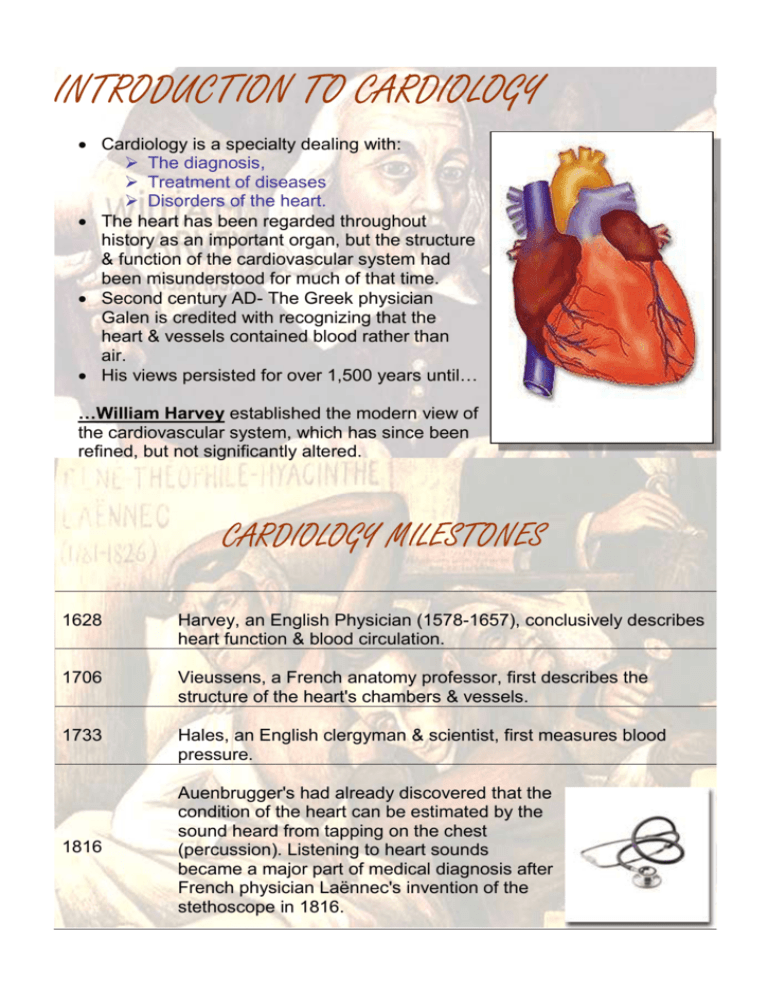
INTRODUCTION TO CARDIOLOGY Cardiology is a specialty dealing with: The diagnosis, Treatment of diseases Disorders of the heart. The heart has been regarded throughout history as an important organ, but the structure & function of the cardiovascular system had been misunderstood for much of that time. Second century AD- The Greek physician Galen is credited with recognizing that the heart & vessels contained blood rather than air. His views persisted for over 1,500 years until… …William Harvey established the modern view of the cardiovascular system, which has since been refined, but not significantly altered. CARDIOLOGY MILESTONES 1628 Harvey, an English Physician (1578-1657), conclusively describes heart function & blood circulation. 1706 Vieussens, a French anatomy professor, first describes the structure of the heart's chambers & vessels. 1733 Hales, an English clergyman & scientist, first measures blood pressure. 1816 Auenbrugger's had already discovered that the condition of the heart can be estimated by the sound heard from tapping on the chest (percussion). Listening to heart sounds became a major part of medical diagnosis after French physician Laënnec's invention of the stethoscope in 1816. 1887 1896 British physiologist Waller publishes the first human electrocardiogram. It is recorded by using an electrocardiograph, which measures the heart's electrical activity. German surgeon Rehn performs the first clinically successfully heart operation, suturing a stab wound to the heart in a 22-yearold man. With the arrival of automation & fast food, life became less strenuous & modern conveniences made physical activity unnecessary. The combination of a sedentary lifestyle & a rich diet led to an increase in clogged blood vessels, heart attacks, & strokes. The rate of heart disease increased so sharply between the 1940 & 1967 that the World Health Organization called it the ‘world's most serious epidemic’. 1948 Medical science immediately set to work studying the disease. A 30 year study began (called the Flamlington Report) providing priceless profile information for predicting heart disease. 1952 Lewis, a US surgeon, performs first successful open heart surgery. 1952 First open-heart surgery performed by University of Minnesota surgeons on a five-year-old girl. Operation is a success. 1953 Gibbon, a US surgeon, first uses a mechanical heart & blood purifier. Temporarily stopping a patient's circulation only gave doctors about four minutes to work before brain damage from oxygen deprivation took place. An intervention was desperately needed! 1958 Heart Lung machines were the answer- It was not until this time that a system involving bubbling blood was perfected & "heartlung" machines came of age. Now surgeons had time to work on a heart that was not only empty of blood, but which was not moving. Where valves were damaged beyond repair, artificial valves were put in. Blocked arteries were bypassed. Weakened arteries were replaced altogether & modern heart surgery seemed unstoppable. 1960's First coronary artery bypass procedures & heart valve replacements performed. 1961 Jude, a US cardiologist, leads a team performing the first external cardiac massage to restart a heart. BUT THERE WAS A PROBLEM!!! WHAT SHOULD BE DONE FOR PATIENTS WHOSE HEART MUSCLE WAS DISEASED BEYOND REPAIR? COULD THESE PATIENTS BE GIVEN NEW HEARTS? ? The answer lay in ‘heart transplants’. Kidneys had been transplanted successfully (after the problems of tissue rejection were solved with drugs that suppressed the immune response). If the barrier had been breached for the kidney, why not for the heart? 1967 Dr. Barnard, transplanted the heart of a 23-year-old woman into the chest of a middle-aged man. He lived for 18 days, until the powerful drugs used to suppress rejection weakened him & he died of pneumonia. BUT WAIT! - ANOTHER PROBLEM AROSE!!! Patients began dying of either rejection or infection. By 1971, 146 of the first 170 heart transplant recipients were dead. What first looked like another surgical miracle had turned into a disaster. Heart surgeons who had promoted the operation admitted defeat. Few surgeons would continue. One who did was Dr. Norman Shumway. His team explored the signs of tissue rejection & answered many complex problems of tissue rejection. Hospitals around the world began to re-open their heart transplant units & their patients began to survive & prosper! 1982 Willem DeVries, an American surgeon, implants the first permanent artificial heart into a patient. Late 1990's Robotics introduced in experimental cardiac procedures. BUT THESE BREAKTHROUGHS HAVE LIMITATIONS TOO!!! Currently in the UK: 1.3 million people who have had a heart attack & around 3 million people have Coronary Heart disease. TOO MANY BROKEN HEARTS IN THE WORLD! The problem with heart transplants now has become finding enough hearts. In the US, 2 million people suffer from congestive heart failure. When drug treatments fail, transplants are the best hope. But less than 2,500 donor hearts are available each year, leaving thousands of patients desperate for an alternative. Summary Advances in surgery have included: Routine repair of coronary artery disease First human heart transplant, performed in 1967 Development of a functioning, artificial heart in 1982. Today, the causes of heart disease are known. To a certain extent, so are the cures. The field of cardiology has grown tremendously to meet the demands of the disease. Many of the milestones in cardiology once seemed unreachable… …Who knows what the future may hold?
